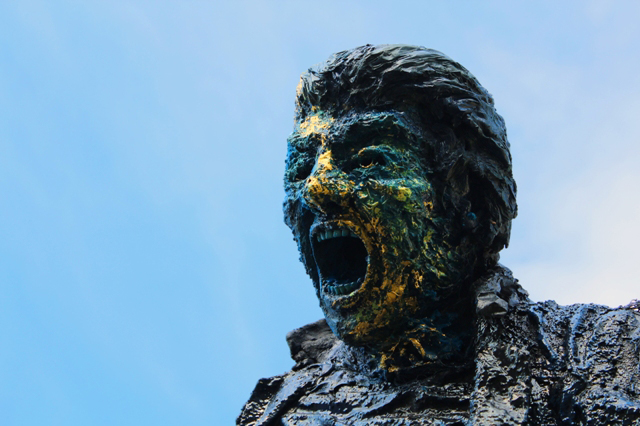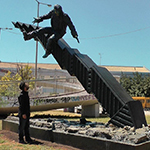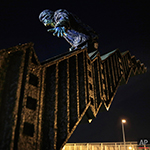
Elsie Baconicola-Yiama on “Crisis” Sculpture
Throughout all ages, art has played its own role in portraying, denouncing, or highlighting events, situations, and people. From antiquity to the present day, political, religious, or national events triggered the inspiration for creating artistic works, which, although at that given time were linked to a specific event, they were able to gain throughout the years eternal acceptance and admiration, due to their high artistic value. For example, every time we hear the music of Mikis Theodorakis, we are deeply touched even though the Greek dictatorship took place a long time ago.
Artistic inspiration always derives from a fact related to either the external or internal life of the artist (historical events, frustration or excitement, etc.). Each artist has their own mode of expression, which can be subtly suggestive or, conversely, intensely denunciatory, like a cry of anguish or despair.
The work “Crisis” by artist Tasos Nyfadopoulos belongs to the second category. The sculpture – consisting of a huge black stock index and a desperate man who follows the downward trend of the index as a victim of socio-economic crisis – works like “a punch in the stomach,” in the sense that it awakens and alerts people. This piece of art does not produce calm aesthetic pleasure but instead stimulates the spirit and sentiment, implying that democratic and humanitarian values have been terribly ignored, due to the implementation of inhuman political measures, which have caused catastrophic consequences to countries and people and have devastated human dignity.
The huge size and the dark color of the sculpture emphasize the unbearable consequences of a crisis affecting dramatically all people, due to irresponsible and criminal political measures, implemented without taking into account the human dimension of the problem but instead treating human beings like impersonal units, like numbers in financial applications.
The artist Tasos Nyfadopoulos is worthy of praise for his talent and charitable work, as well as his initiative to create this artwork and donate it to the municipality, so it can be placed in public view. The sculpture will stand imposingly denouncing the inhuman economic and social policy, which led to this unprecedented humanitarian crisis. I would like to express my admiration and congratulate all these young people who rallied enthusiastically to contribute towards the implementation of this project.
This artwork, at this crucial period that we are going through, can in no way be looked upon with indifference. This monument denounces and screams, and this screaming joins the screaming of all people.
Let us not forget the words of Seferis: “Nothing unites us better than a common artistic emotion.”
Elsie Baconicola-Yiama
Associate Professor of Philosophy
Department of Philosophy
National and Kapodistrian University of Athens
This article is a translation of the original text written in Greek.




